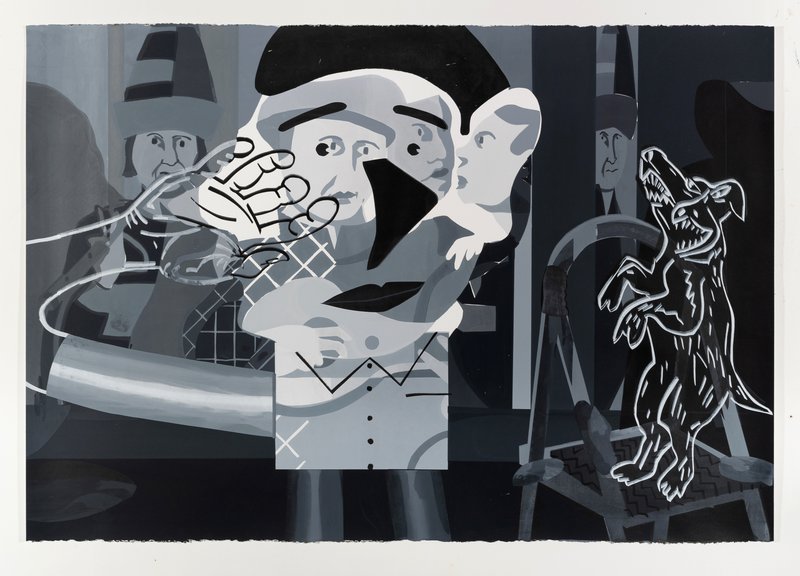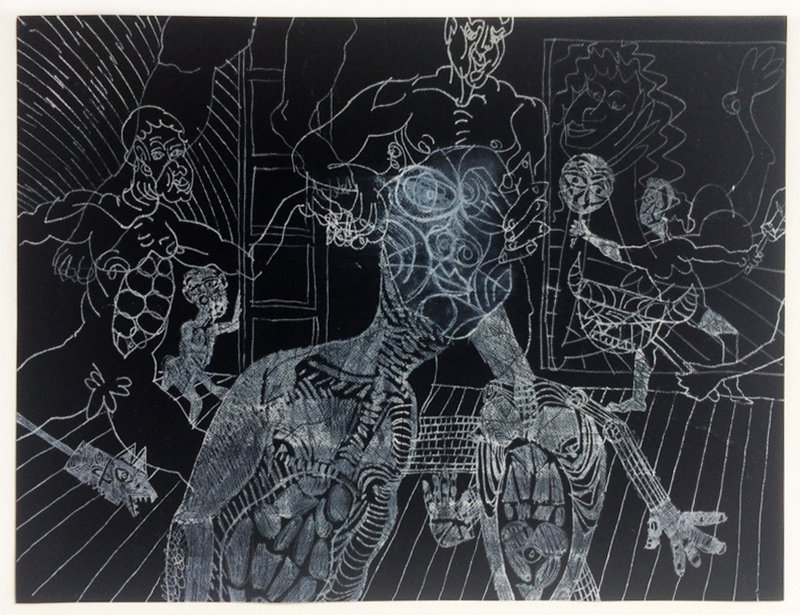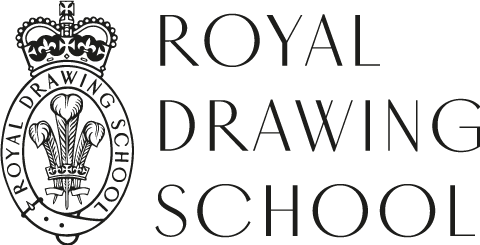International Artists in Lockdown: USA and Israel
Here, two alumni living in the US and Israel share their experience of being a practising artist during an international pandemic, and how these countries have influenced their work.
Josias Figueirido, Drawing Year 2010
At the end of July I moved from the Philadelphia area, in Pennsylvania, to Laredo, Texas. I will be starting at Texas A&M International University in the fall as an Assistant Professor of Art teaching drawing and painting. I lived in the Philadelphia area for five years; I went to graduate school there and afterwards I rented a studio in the northern part of the city. I loved my time in Philadelphia and will miss its artistic community and many good friends, but I’m very excited about this new chapter in Laredo. Whilst I look for a studio I continue to draw at home. That’s one of the great things about drawing—you can practice it anywhere and keep your mind sharp and engaged with ideas.

Next Level
My work channels social and personal dilemmas into biographical and fictional narratives. Recurring topics in my work include technology, loneliness, definitions, meaning, war, power, peace, and love. The figures and scenarios are invented and constructed with an awareness of digital aesthetics. The space oscillates between the virtual and the physical world, alluding to the struggles we face when trying to form an understanding of reality while moving from one space to the other. Humour and horror are interwoven within the narratives; the same characters, actions, and situations that amuse us also distress us.
The current pandemic has led me to create a series of narratives about struggle and hope. Times like this are quite sobering; they remind us of our own mortality, and we appreciate even more how meaningful relationships are. For many of us, these times also provide content for our own work. In my case, the confinement of the last months has led me to focus on intense periods of drawing that have resulted in a series of black and white monotypes and paintings.

The Artist
Although currently my drawing is mostly imaginative, drawing from observation is still very important within my practice. I think there is a very intimate relationship between observation, memory, and imagination. In my work, imagination seems to be a process of transformation, change, and invention of memories and things previously observed, where one idea generates another idea. It is a slow process, and ideas evolve gradually. I find drawing from observation enriches my imagination and strengthens my memory while providing me with more material to transform.

Luchador Series No.4
I am very excited about living in a bilingual and bicultural city such as Laredo. Since I just moved here, there is so much that I need to explore yet, but as soon as I entered the city and drove around I was fascinated by the sense of space, the palm trees and cacti, and the Spanish-influenced architecture.
My work has always been deeply affected by every place I have lived in, by being exposed to the art of that place, by the culture and habits, by the concerns and ideas that are relevant to people living there, by the imagery, the colours, the architecture and how one moves through space, and by the overall mood and atmosphere of the place. Before, while living in Spain and London, the characteristics of each place showed through my work in a more descriptive manner; now it is a bit more subtle, as they are channelled through imagination.
I feel my new work is going to be a mixture of imageries and content and that I will be pulling a lot more from my past and my culture of origin as well as from the local resources.
Instagram: @josiasfigueirido
Web: josiasfigueirido.com
Asya Lukin, Drawing Year 2009
For the past 7 years I have been living in Yaffo, Israel where I have a studio in my flat. I teach painting and drawing from observation, so when the virus came, I was pretty shocked at the beginning; I didn’t know how to continue to teach. However, I started teaching on Zoom, and surprisingly discovered a lot of potential in Zoom teaching, that I didn’t imagine would be possible in a normal routine.

During last few years I had to spend quite a lot of time in various hospitals, where I was drawing from the observation, this brought me to the subject of my stop motion animation film and series of paintings: People in the Hospital. Often when I tell somebody that I am working on this subject, they tell me that it is a very tough and heavy theme, but I don’t think so. My works are not about illness, they are about the human state and behaviour which is much more open and undisguised when people are in such a vulnerable situation like being in a hospital as patients or as their guests. My work is both a way to contemplate people while they are in a crucial time in their lives, seeing both tragic and humorous gestures and face expressions; and an opportunity to express compassion to them.

I think that each time and place has their own colour and plastic language that influence painters, whether they want it to or not. I can’t say that I am somehow especially considered about correlating time and place, I am just trying to be myself in my works. However when I think about works I made in different countries, I am pretty surprised to discover that for example paintings that I made in Russia have very heavy deep basic colours, probably influenced by Russian nature, while paintings and drawings made in London suddenly received lots of reddish brown colour, perhaps influenced by the colour of London bricks, and in my Tel Aviv landscapes I find lots of monochrome works, perhaps because of the very strong sun light.
For long time I have been struggling to paint Israeli landscapes but was never really satisfied with my works. A few years ago I realised that perhaps it is because I don’t feel especially strong emotional connection with it. I definitely appreciate its beauty and it’s very special flavour and rhythm, but being born in Russia, I feel myself like a plant from a very different landscape; I miss wet roads full of yellow leaves of St. Petersburg in autumn and high pine trees with a glittering river behind them. This is the landscape where I grew up and that I am always looking for. For some time, I tried to paint Israeli landscape, imagining that it is Russia, but it was rather funny experience and didn’t work.
When I am painting or animating people I feel a very deep connection to them, no matter where they live and what language they speak. So perhaps this is the reason, why the main subject of my works is people.

During lockdown however, I stopped drawing people from the observation for a while and concentrated on the work in the studio, and even when I was going out of the studio, I didn’t draw people from the observation, probably because I am mostly interested in face expressions and during corona the faces are hidden under the masks.
However, few days ago I discovered something that may influence the further work – I met a neighbour, who was wearing a mask and also black sunglasses, so the face was totally covered, we didn’t speak, nevertheless I noticed that I knew exactly what his face expression was, and then I realised that we can see each other's expressions without seeing the face, so perhaps facial mimics is just a small part of the whole body expressions and it is possible to recognise a smile, or anger of a person by some special turn of his head or foot without seeing a face.
After I finish my film and series of paintings about hospital visitors, I hope the pandemic will be over and I will travel to see and paint new landscapes and other people.
Instagram: @asya.lukin



